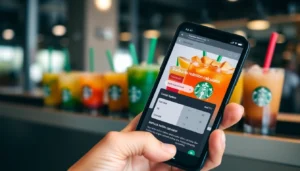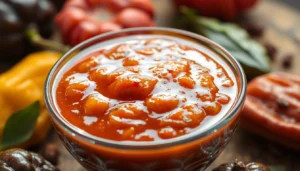Understanding the Challenges of Saving Recipes from Instagram
In today’s digital age, social media platforms like Instagram have become a treasure trove for culinary inspiration. From vibrant food photos to step-by-step cooking reels, Instagram offers endless ideas to elevate your culinary repertoire. However, capturing and organizing these recipes can be surprisingly complex. Many home cooks and professional chefs alike encounter significant hurdles when trying to save and manage recipes sourced from social media. These challenges range from technical limitations to organizational chaos, often leading to frustration and lost inspiration. To truly harness Instagram’s potential as a recipe resource, understanding these challenges is crucial.
Common Difficulties in Recipe Collection
One of the primary obstacles is the ephemeral nature of social media content. Posts can be deleted, accounts privatized, or content altered, resulting in lost recipes. Additionally, social media posts often lack structured formatting, making it difficult to extract precise ingredient lists and instructions. Users frequently resort to manual copying or screenshots, which can be inconsistent and cumbersome. Moreover, the diversity of formats—videos, reels, stories, and static images—complicates the process further. Managing multiple save locations, such as favorite images or notes, often leads to disorganized collections that are hard to retrieve when needed.
Limitations of Traditional Recipe Apps
Traditional recipe management tools are typically designed for recipes stored within their own platforms. They often lack direct integration with social media, forcing users into manual import methods that are time-consuming and error-prone. These apps may also impose rigid formats or categories that don’t align with how users want to organize their personal collections. For instance, many apps require manual entries, which can be tedious, especially when dealing with a large influx of recipes from social sites. Furthermore, they sometimes restrict data ownership, raising privacy and control issues—especially critical when dealing with proprietary or personal content shared on social platforms.
Why Social Media Recipes Are Hard to Save
Beyond technical issues, the nature of social media itself makes saving recipes challenging. Content is often embedded within videos or reels, making it difficult to directly extract or share information cleanly. The fast-paced stream of posts encourages bookmarking or screenshotting, but these methods lack organization and context. Moreover, social platforms update or change algorithms, thus altering how and where recipes appear. For creators, copyright or content sharing restrictions are sometimes barriers to saving or repurposing recipes. As a result, many individuals struggle to create a customized, accessible, and sustainable recipe library from their social media finds.
Effective Ways to Save Recipes from Instagram
Fortunately, advancements in technology and clever workflows have made it easier than ever to save recipes from instagram. Various strategies, from quick browser extensions to dedicated apps, can streamline the process, ensure better organization, and enhance your overall culinary exploration. Below, we explore practical methods to efficiently capture and manage social media recipes.
Using Browser Extensions and Apps for Quick Saving
Browser extensions like “Save to Pocket,” “Evernote Web Clipper,” or dedicated recipe extractors such as “Mela” provide rapid ways to save online content. For recipes specifically shared via Instagram, these tools can often capture the entire post, including ingredients and instructions, sometimes even parsing the text to create a structured format. For example, Chrome extensions that scrape recipe data can be programmed to extract ingredient lists and instructions directly from posts or linked web pages, saving time and ensuring accuracy. Additionally, dedicated third-party applications like Flavorish have introduced features that enable importing recipes directly from social media platforms, providing a seamless experience.
Sharing Posts Directly to Recipe Management Tools
Many social media apps, including Instagram, support sharing content directly to third-party platforms. By sharing a post or reel to a compatible app—like ReciMe or Flavorish—you can automatically ingest the content into a structured recipe format. This method minimizes manual steps and preserves the original formatting. Some apps are designed explicitly for this purpose, allowing users to share directly from Instagram to their recipe repositories with just a few taps. This process is particularly effective when combined with automation tools that regularly sync these shared recipes into personal cookbooks or collections.
Manual Copying and Screenshot Strategies
Manual methods remain relevant, especially for content not easily exportable via technical integrations. Taking screenshots of recipe posts, especially those with clear ingredient lists and instructions, is a common approach. To optimize this, organizing screenshots into folders labeled by cuisine, meal type, or source can help maintain order. For better clarity and searchability, cropping images, adding annotations, or transcribing the recipe details into notes apps can enhance usability. However, manual copying demands diligent organization to avoid losing valuable recipes amidst a clutter of files or images.
Tools and Platforms to Simplify Saving Recipes from Instagram
Modern tools and platforms are transforming how social media recipes are captured, stored, and organized. Among these, Cooksync stands out as a versatile hub that consolidates your culinary finds from multiple sources, including Instagram, and syncs them effortlessly across your preferred platforms. Leveraging such tools can significantly reduce the time and effort involved in recipe collection, granting you more space for culinary creativity.
Cooksync: A Hub for All Your Social Recipe Finds
Cooksync functions as a transport layer for your recipes, not just another repository. Its core strength lies in connecting to your existing platforms—whether it’s notes, cloud storage, or specialized recipe apps—and automatically syncing content. With Cooksync, you can import recipes directly from social media posts, websites, or email links using browser extensions or mobile apps. This centralized approach ensures your recipes are always organized, accessible, and editable in the environment you trust. Its adaptable structure means you can create a personal digital cookbook with the flexibility to format and categorize recipes as you see fit.
Integrating with Instagram, Pinterest, and Other Platforms
Many users find value in integrating Cooksync with their favorite social platforms. Whether it’s saving a recipe from an Instagram reel or pinning a culinary idea from Pinterest, Cooksync’s supported integrations allow automatic synchronization. For example, sharing an Instagram post directly to Cooksync via the app or browser extension captures the recipe, tags it appropriately, and syncs it with your existing cooking workflow. This interoperability ensures your social media discoveries are preserved without disrupting your browsing experience.
Leveraging Automation and Sync Features
The real power of modern tools lies in automation. Cooksync’s ability to automatically sync recipes to platforms like Evernote, Notion, Google Keep, or dedicated recipe apps means you spend less time managing files and more time cooking. Setting up such integrations once allows continuous updates—when a creator posts a new recipe or updates an existing one, your digital collection remains current. These features enhance discoverability, enable easy sharing, and make your recipe collection scalable as your culinary library grows.
Best Practices for Organizing and Accessing Saved Recipes
Capturing recipes efficiently is only part of the equation; organizing them effectively is equally important. A well-structured system ensures that your recipes are easy to find, edit, and share whenever inspiration strikes. Here are expert-backed strategies to optimize your recipe management workflow.
Creating Custom Categories and Libraries
Designing a personalized categorization system tailored to your cooking preferences is crucial. Use themes such as cuisine type, meal occasion, dietary restrictions, or difficulty level. Digital tools like Cooksync allow you to create custom folders or tags, facilitating swift retrieval. For example, you might have categories like “Vegan Snacks,” “Holiday Desserts,” or “Quick Weeknight Dinners.” Maintaining consistency in tagging and naming conventions helps keep the collection organized as it expands.
Maintaining Data Privacy and Control
By choosing a tool like Cooksync that emphasizes user control, your recipes remain private and accessible only to you unless you decide to share. Ensuring your collection resides within platforms you trust and understanding data permissions minimizes privacy concerns. Also, regular backups of your recipe data prevent loss due to platform changes or technical issues. The flexibility to export or migrate your recipes ensures continued control over your culinary library.
Using Mobile and Desktop for Easy Access
Accessibility across devices is vital for a seamless cooking experience. Mobile apps empower you to access and update recipes on the go, whether shopping at the store or cooking in your kitchen. Desktop platforms facilitate detailed editing and organization, especially when dealing with large collections. Integrating your recipe system within a cross-platform environment like Cooksync guarantees that your culinary inspiration is always just a tap or click away.
Maximizing Your Recipe Collection and Discovering New Dishes
Building an extensive, well-organized recipe library is a journey that enhances your culinary adaptability and creativity. To make the most of this resource, incorporate personalized recommendations, share recipes with others, and keep updating your collection with new finds.
Personalized Recommendations for Inspiration
Tools like Cooksync leverage data about your cooking preferences and collection trends to suggest new recipes you might enjoy. This feature stimulates culinary innovation and prevents stagnation. Regularly reviewing recommended recipes can introduce you to cuisines or techniques you might not have explored otherwise. Over time, this curated discovery process transforms your collection into a living, breathing culinary encyclopedia tailored to your taste.
Sharing Your Recipes with Friends and Family
Sharing your curated recipes fosters social bonds and invites collaboration. Whether via shared folders, printable collections, or social media, effectively communicating your culinary finds broadens your enjoyment. Many platforms support direct sharing options or export functionalities, enabling you to build a community around your personal cookbook.
Continuously Growing Your Digital Cookbook
Consistency in collecting new recipes and refining your organization system ensures your digital cookbook remains vibrant and useful. Set regular intervals to review, categorize, and update entries. Take advantage of automation to keep your collection current, especially as social media platforms evolve and introduce new ways to discover content. Over time, this disciplined approach will make your recipe library an invaluable resource for every meal planning, special occasion, or spontaneous cooking adventure.



